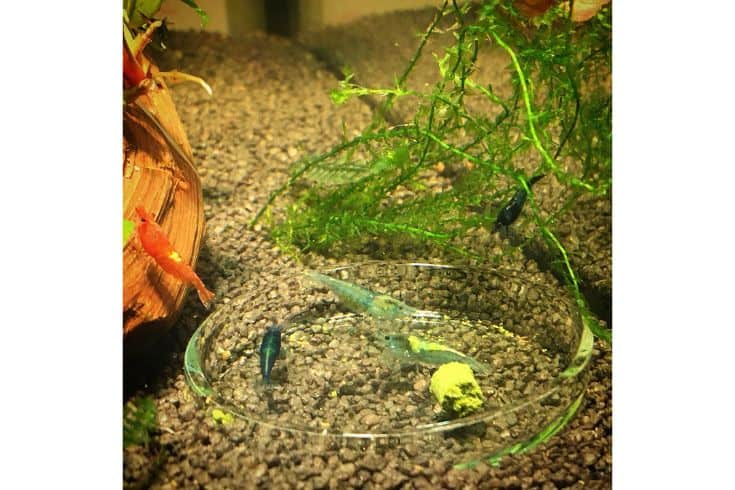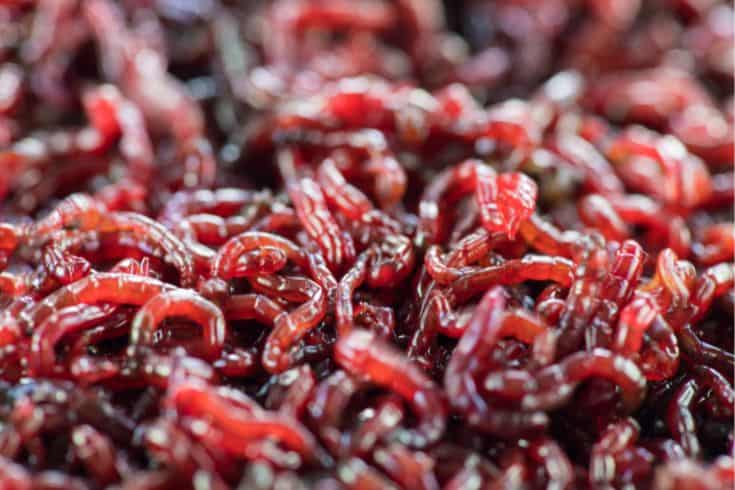Guppies and shrimp are both popular additions to home aquariums, but whether they can live together is a controversial topic. On the one hand, some argue that guppies and shrimp can coexist in a healthy environment. On the other hand, skeptics worry that guppies may eat the smaller shrimp, creating an unbalanced ecosystem where the shrimp population is quickly decimated.
To ensure the safety and health of both species, it is important to research the species in question and to understand the potential risks associated with mixing them in the same tank. This article looks at the potential risks of keeping shrimp with guppies, and the steps that can be taken to create a safe and healthy environment for both.
Can Guppies and Shrimp Live Together?
The short answer to this question is yes, guppies and shrimp can live together in the same aquarium. However, there are some important considerations to keep in mind when housing these two species together.
Guppies are a type of fish, and they are generally larger than shrimp. Because of this, it is important to understand the potential risks associated with this setup. First and foremost, guppies are larger, omnivorous fish that may see your shrimp as prey. Bolder guppies may pick on your shrimp, nip at them, and even try to eat smaller shrimp.
In addition, guppies and shrimp have different water parameters and requirements. Guppies prefer warmer water with a higher pH, while shrimp prefer colder water with a lower pH. While it is possible to identify a middle ground between the two that works for both species, it is important to ensure that the water parameters are very stable.
Despite the risks involved in keeping shrimp and guppies together, doing so comes with some benefits. Let’s take a closer look at some of these perks in the next section.
Benefits of Keeping Shrimp and Guppies Together

The first obvious benefit of keeping shrimp and guppies together is that it creates a more interesting and diverse aquarium. This can be especially advantageous for people who are looking to create an interesting, vibrant atmosphere in their home. Not only does this combination of species add variety to the tank, but it also offers a great deal of activity for viewers to enjoy.
Moreover, shrimp make great scavengers – they will feed on algae, leftover food, and other debris in the tank. This helps keep the guppy habitat healthy for both shrimp and guppies alike.
Another benefit of keeping shrimp and guppies together is that they create a natural balance in the tank, as they both occupy different parts of the aquarium. The guppies will often stay near or at the surface while shrimp are bottom feeders. This helps promote natural interaction between species without too much competition for food or space in their aquatic home.
All these factors make shrimp surprisingly great guppy tank mates. Since the two species are generally peaceful towards each other, they will not compete for resources or territory within their shared habitat. This allows them to coexist peacefully without any territorial squabbles that may otherwise arise if more aggressive fish were kept together with them.
Creating a Healthy Environment for Guppies and Shrimp
So yes, keeping shrimp and guppies together can be a good thing. However, you still need to create a healthy environment for both species. Here are some tips to get you started:

Select Compatible Shrimp Species
The sheer number of shrimp varieties available can be overwhelming, but doing your research can make finding the perfect shrimp for you much easier. When selecting shrimp for a guppy tank, it is important to select species that are not known to be aggressive or predatory. Popular choices include ghost shrimp, dwarf shrimp, and bamboo shrimp, all of which are known for being relatively peaceful.
You can also keep active species like the cherry shrimp with guppies, as long as you provide them with enough hiding spots to feel safe. Though guppies are generally peaceful fish, the sight of a bright red critter darting across the floor of your tank might be too tempting to resist! It’s much better to err on the side of caution and stick to more docile species.
Just as important as the species of shrimp you choose is its size. Stick to adult shrimp, as they have reached their full size and are less likely to be seen as a snack. In the same vein, avoid baby shrimp – these are tiny enough to fit in guppy mouths, making it highly probable that they will be eaten. As long as you stick to these rules, you should have no problem keeping shrimp and guppies in the same tank.
Create Plenty of Hiding Spots
One of the most important thing you can do for shrimp living in guppy tanks is to create lots of hiding spots. This will give your shrimp colony somewhere to hide when they feel threatened, and it will also prevent guppies from snacking on their tankmates. Hiding spots are also great for breaking up the line of sight between the two species, which goes a long way in keeping your shrimp safe.

In our opinion, the best hiding spots are made of real plants such as water wisteria and guppy grass. These can be easily secured in the substrate with a small weight or rock, and will create a gorgeous backdrop for your aquarium. Aquatic plants also filter the water and provide oxygen, which will help keep your shrimp healthy.
If you don’t have any live plants in your tank, you can always create hiding spots with artificial decorations such as driftwood, rocks and caves. Just be sure to sand or file down any sharp edges, as shrimp can easily get injured. Another great idea is to use PVC pipes; these are perfect for shrimp colonies and can be tucked away in the corners of your tank.
No matter what hiding spots you choose, be sure to provide plenty of them so that your shrimp have somewhere safe to retreat when they feel threatened or need a break from their guppy tankmates!
Feed Your Pets Appropriately
It’s important to note that guppies can sometimes outcompete their shrimp tank mates for food. Therefore, if you intend to keep shrimp in a tank with guppies, you’ll need to give your shrimp the individual attention they need and deserve. Keep a close eye on the shrimp, and be prepared to feed them in a separate tank if needed.

Not only is it important to feed your pets the right amount of food, but also the right type. Both guppies and shrimp need a combination of plant matter and protein sources in their diet. Most guppies will be content with a combination of flake foods, supplemented by the occasional algae wafer and some animal protein. Brine shrimp and bloodworms are some of the most popular live foods for guppies.
On the other hand, shrimp will do best on proper shrimp food. These foods are typically composed of freeze-dried or frozen brine shrimp, bloodworms, and other protein sources. Most importantly, they are supplemented with additional calcium, which is essential for the health of the shrimp’s exoskeleton. The same way your bones grow stronger with calcium, so too do shrimp’s shells.
No matter what you choose to feed your pets, be sure to feed them regularly. Remember to remove any leftover food to ensure the water stays clean and healthy!
Select the Correct Tank Size
It almost goes without saying, but choosing an appropriately-sized habitat is key to keeping shrimp and guppies happy in the same tank. A 10-gallon tank is the absolute minimum you can get away with, and this setup will only accommodate a tiny group of 3 adult guppies and 1 shrimp. We recommend a tank of at least 20 gallons, which will comfortably house a small group of guppies and shrimp.
Not only will a larger tank give your fish more swimming room, but it will make keeping the tank clean much easier. Guppy owners will readily attest to the fact that these tiny fish produce a lot of waste. A bigger tank keeps nitrates and other pollutants at a healthy level, by diluting them in the larger volume of water. On the other hand, tiny tanks will accumulate waste quickly and require frequent water changes.
A good way to estimate the tank size you need is to allocate approximately between 2-3 gallons of water per guppy, and 1 gallon of water per shrimp. Be sure to account for any displacement caused by tank decor and accessories. Many people overestimate the number of guppies and shrimp they can keep in a tank, so it’s better to err on the side of caution and get a bigger tank if you are unsure.
Ensure That Water Parameters Are Correct
We’ve touched on this briefly, but the ideal environment for shrimp and guppies differs slightly. If you were only keeping a colony of shrimp, you’d opt for cooler water temperatures between 65-75F and a slightly acidic pH of 6.0 – 7.5, and a hardness level around 3-8 dKH (54–142 ppm). For guppies however, you’ll opt for warm water between 72-82F, and slightly higher pH between 7.0 – 8.0.
These figures show that there is a slight overlap in the parameters that both species need, so if you are keeping a combination of shrimp and guppies it is important to ensure that the water parameters fit somewhere within these ranges. This can be achieved by regularly testing your tank’s water quality with an accurate testing kit or strips.

Naturally, the narrowed range of water parameters that both species inhabit can present a challenge, but with the right care and attention it is possible to provide a happy home for shrimp and guppies alike. Just know what you’re getting yourself into! You’ll need to invest in tools such as a good filter and heater, as well as water conditioners to help keep your tank’s environment within the ideal ranges.
Conclusion
Guppies and shrimp can coexist in the same tank, but it is important to take the necessary precautions to ensure their safety and health. With the right steps, you can create a successful aquarium where both species can thrive.
We hope this article has helped you understand the basics of keeping guppies and shrimp together. Remember to do your research before adding any pets to your aquarium, as this can help ensure they live in a safe environment. Thanks for reading, and please share this article with any fishkeepers you know!
